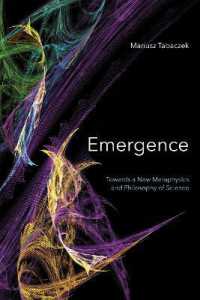Full Description
The Autism Program Environment Rating Scale - Preschool/Elementary (APERS-PE) is an assessment used to evaluate the quality of educational programs for preschool/elementary students with autism. The APERS-PE contains 62 assessment items organized in 10 domains (e.g., Learning Environments, Curriculum and Instruction, Family Involvement, etc.). To complete the assessment, a trained APERS rater visits the school program. The rater 1) reviews student records for 2-3 focal students with autism, 2) interviews school personnel and parents of the focal students, and 3) observes these students throughout their school day, taking notes throughout the process, before completing an electronic scoring tool. The rater then shares the results with school personnel to use in improving program quality.
Contents
About the Downloads
About the Authors
Preface
Acknowledgments
Chapter 1: Introduction to the Autism Program Environment Rating Scale
The APERS and Program Quality
APERS-PE at a Glance
Context for the APERS: Assessment of Quality in Education
APERS Development
APERS 2023
Summary
Chapter 2: Getting Started: APERS Training and Administration
Step 1: Complete APERS Training
Step 2: Make Initial Arrangements for the APERS
Step 3a: Review IEPS and Other Relevant Student Records
Step 3b: Conduct Observations
Step 3c: Complete Interviews
Additional Considerations for Self-Contained Special Education Classes and Inclusive Programs
Summary
Appendix 2.1 APERS-PE Record Review Guide
Appendix 2.2 APERS-PE Observer Guide
Appendix 2.3 APERS-PE Tip Sheet
Appendix 2.4 Sample Letter to Administrator
Appendix 2.5 APERS-PE Planning Guide (Preliminary Interview)
Appendix 2.6 Sample Letter to Parent
Chapter 3: Scoring the APERS
Data Used to Score the APERS-PE
Reviewing Data
Making Judgments About APERS-PE Items
Using the Scoring Tool
Item Format and Scoring
Scoring Description by Domains
Automatic Generation of Scores
APERS-PE Scoring Calculator
Summary
Chapter 4: Using APERS Information
National, State, and Local Leaders' Use of APERS Information
Research Uses of APERS Results
Summary
Appendix Sample Report to Building-Level Leaders
Chapter 5: APERS Self-Assessment
Format for Items
Description of Program Quality Domains
Procedures for Completing the APERS-PE Self-Assessment Tool
Using the APERS-PE Self-Assessment Program Ratings
Summary
Chapter 6: Understanding the Empirical Foundations and Research Uses of APERS
Psychometric Features of the APERS
NPDC and the First Use of APERS in Research and Evaluation
Evaluating the NPDC Model When Implemented in Elementary Schools
Evaluating Changes in Program Quality in the Efficacy Study of the Center on Secondary Education for Students with Autism Spectrum Disorder (CSESA)
Using APERS to Promote Program Quality in Sweden
Summary
Frequently Asked Questions
Glossary
References







